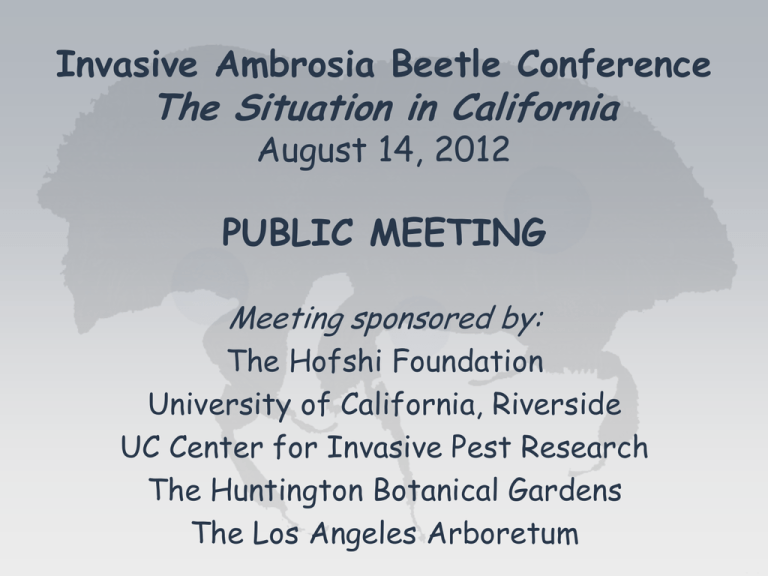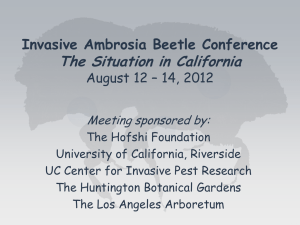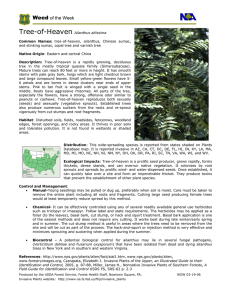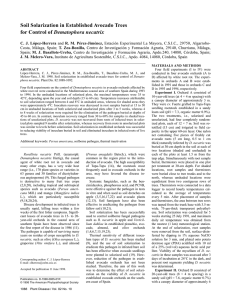The Situation in California Invasive Ambrosia Beetle Conference PUBLIC MEETING
advertisement

Invasive Ambrosia Beetle Conference The Situation in California August 14, 2012 PUBLIC MEETING Meeting sponsored by: The Hofshi Foundation University of California, Riverside UC Center for Invasive Pest Research The Huntington Botanical Gardens The Los Angeles Arboretum Detection and Control Methods Currently Available: Symptomatic Trees, Traps, Pesticides, and Biological Control T.D. Paine Department of Entomology University of California Riverside, CA Identification of Symptomatic Trees Beneath the Bark Strategies to Limit Movement and Tactics for Management • Routes of facilitated movement – identification and reduction • Previous efforts with similar species – where are the successes Trapping • Assess population activity and relative abundance • Trap design – purple prism, multiple funnel, yellow card • Attractive lures ? Cultural Control and Sanitation • Tree removal • Treatment of slash and debris • Chipping or grinding • Solarization and composting • Firewood movement Mark Adams, Downey Trees, Bugwood.org Cultural Control and Sanitation • Tree removal • Treatment of slash and debris • Chipping or grinding • Solarization and composting • Firewood movement Joseph O'Brien, USDA Forest Service, Bugwood.org Chemical Control • Insecticides and bark beetles – getting the material to the target • Systemic insecticides – new materials and delivery, injections or drenches • Contact insecticides – barrier sprays • Value of trees and cost of treatments Biological Control • Native natural enemies shifting to a polyphagous invasive species • Potential for introduced natural enemies • Biological control of fungal associates Research and Implementation • New species and new environment • Start with the experience of others – related species or different environments • Adapting methods to the California conditions and California stakeholders









